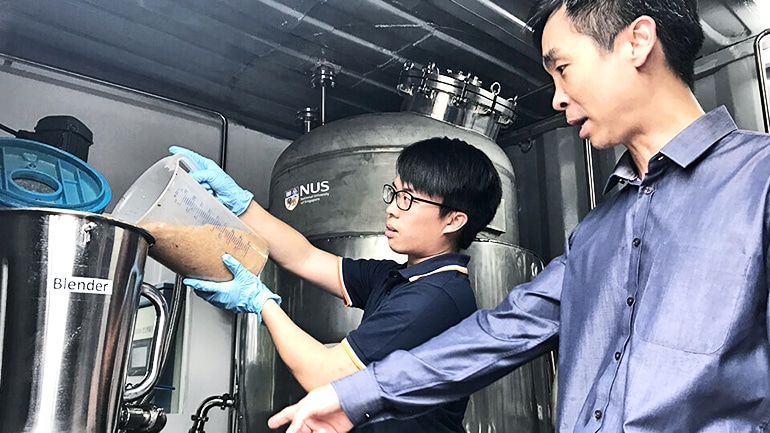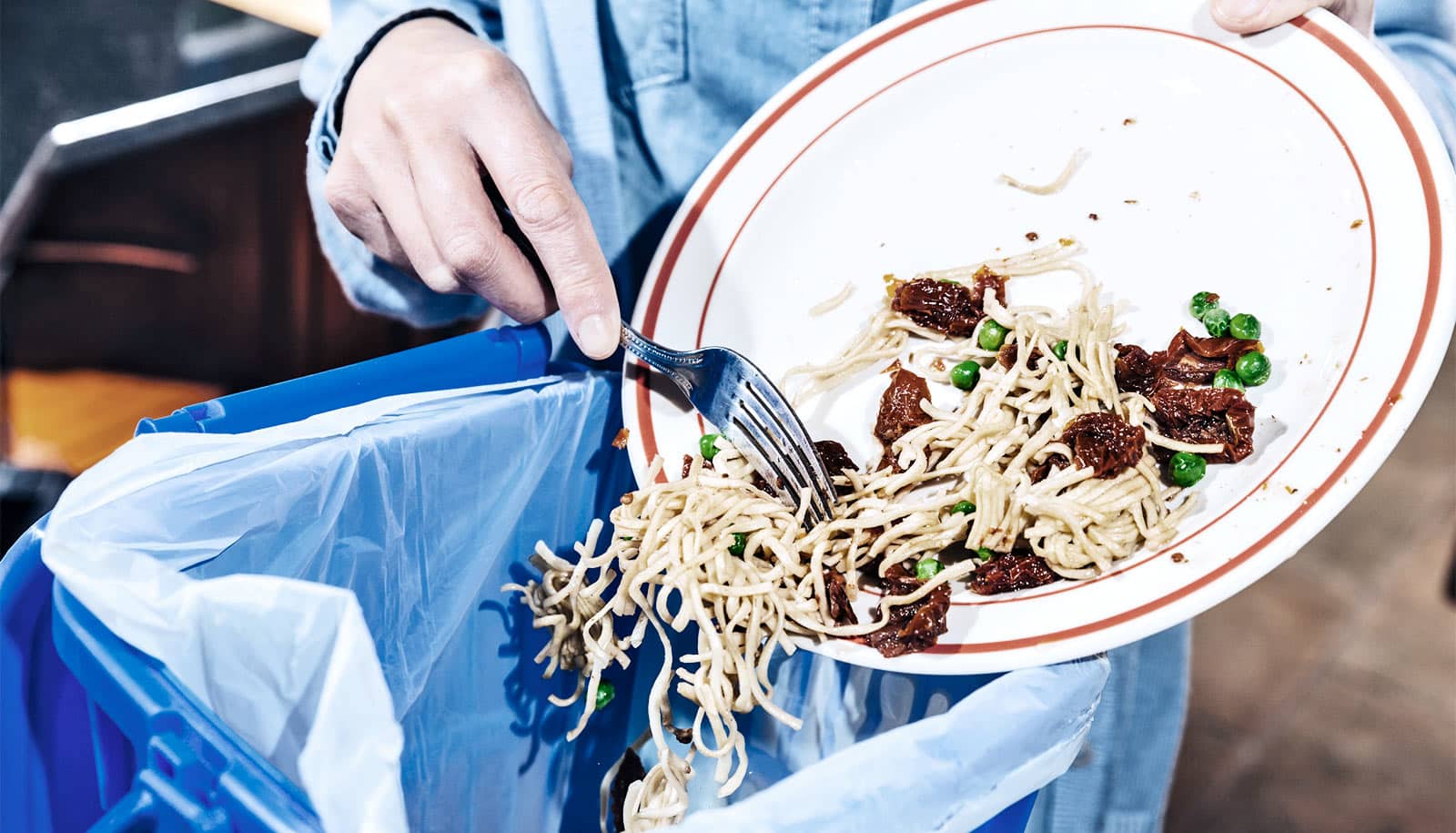Researchers have developed an anaerobic digester system that recycles food waste to produce electrical energy and heat.
This digester system is self-sustaining, with the generated electricity and heat fully powering the system and its processes.
“Unlike composting which is used in a lot of commercial waste food digesters, anaerobic digestion is relatively odorless…”
In Singapore, food waste reportedly accounts for about 10 percent of the total waste generated in the nation, while the recycling rate of such waste is currently at about 14 percent.
“Our digester system is easy to operate, and we can now generate electricity, heat, and fertilizers from food waste that would otherwise be disposed of,” says Tong Yen Wah, associate professor from the chemical and biomolecular engineering department at the National University of Singapore Faculty of Engineering, co-program director of E2S2-CREATE, and a principal investigator at the university’s Environmental Research Institute (NERI).
“All the processes in the system can be easily controlled and monitored to ensure optimal performance and safety. For instance, we have sensors that are programmed to send out end-of-process updates and flag any safety concerns in real-time directly to the team via mobile phone alerts,” says Tong.
From food waste to fuel
“An anaerobic digester works like a biochemical stomach that breaks down organic matter in an oxygen-free (anaerobic) environment. Using a specially formulated mix of anaerobic micro-organisms, the digester system efficiently breaks down food waste into biogas that is subsequently converted into heat and electrical energy,” explains Zhang Jingxin, a research fellow who designed the system.
The heat is reused to produce hot water that gets channeled back into the jacket layer surrounding the anaerobic digester tank to ensure that the digestion is maintained at an optimum working temperature of about 50 degree Celsius.

From the control computer, sensors, and lights to the engines, pumps, and ventilating fans, every component of the system runs entirely on electricity generated from the self-contained system. Excess electrical energy is stored in batteries which can be used to power or charge electronic devices such as mobile phones and tablets.
Based on the team’s calculations, one ton of food waste can generate between 200 kilowatt-hours (kWh) to 400 kWh of electricity, depending on the composition of the food waste. For instance, food waste that is high in carbohydrate, protein, and fat content produces more biogas, yielding more electrical energy.
The anaerobic digester also converts about 80 percent of the food waste fed into the system into nutrient-rich digestate, which can be processed to produce liquid fertilizers for farming and horticultural needs.
Digestion made easy
The researchers have developed a mobile anaerobic digester system, which they’re testing in a residence hall for about six months beginning from late January 2018.
The system is housed in a 20-foot container and can be purposefully carted off to venues to fulfil ad-hoc demands for a food waste recycling facility. This mobile unit fits in two outdoor parking lots, and has solar panels on its roof to harness solar energy as a backup power source and a tank for collecting rain water.
The team is targeting to process up to 200 kilograms of food waste daily and will be using the system to test out different configurations. Excess electrical energy generated by the system is channeled to a mobile charging station where students can charge their mobile phones and tablets for free.
The researchers are also working on a larger, stationary anaerobic digester system to cater to the needs of a canteen or food center. This system would be able to process up to 400 kilograms (882 pounds) of waste food daily.
4-in-1 system makes power, water, A/C, and heat
“Unlike composting which is used in a lot of commercial waste food digesters, anaerobic digestion is relatively odorless which makes this approach suitable for an urban city environment. Our system removes moisture and trace gases such as hydrogen sulphide that gives food waste its unpleasant smell,” explains Tong.
Currently, the team is closely monitoring and studying the feasibility and outcomes of the two anaerobic digester systems. They are also working with other research groups to expand the project, such as processing the digestate into suitable fertilizers for horticulture and crop farming.
“We are keen to see whether this model could work in Singapore’s public residences. The anaerobic waste digester has the potential to help towns reduce waste and greenhouse gas emissions, as well as be more energy and resource efficient,” says Tong. The team is also looking to expand their project in China as well.
Researchers from Shanghai Jiao Tong University also contributed to the work.
Source: National University of Singapore



